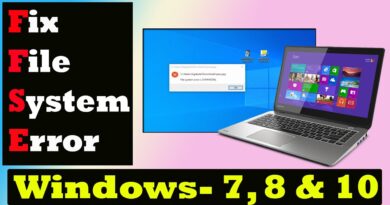Repairing an Old Pentium 4 PC | Hard Disk Replacement and Windows 7 Installation
**Video Description: Repairing and Upgrading an Old Computer with a New Hard Drive**
In this video, we will be detailing the process of repairing an old computer that was brought in due to issues with its hard drive. Here are the steps we followed to diagnose and fix the problem by installing a new hard drive:
1. **Diagnosing the Issue:**
– We received an old computer for repair.
– Initially, it had a problematic hard drive, which was causing erratic behavior and installation issues.
– Despite having a lot of important data, including accounts information, the existing hard drive (a SATA drive) was not allowing Windows installation to complete properly.
2. **Initial Attempts at Repair:**
– We tried installing a 64-bit version of Windows 7, but it performed poorly, freezing intermittently.
– Switching to a 32-bit version also failed, as the installation did not complete even after multiple attempts.
– The computer had three partitions, and we attempted to reinstall Windows on the existing partitions but faced persistent issues.
3. **Installing a New Hard Drive:**
– A new 500 GB SATA hard drive was installed.
– We created two partitions: one 150 GB for Windows 7 and the other for the remaining space.
– The new hard drive installation proceeded smoothly, indicating the old drive was the issue.
4. **Transferring Data:**
– Once the installation on the new hard drive was complete, we planned to transfer all data from the old drive’s partitions (D and E drives) to the new drive’s partition.
– We decided to disconnect the old hard drive after data transfer to avoid future issues but kept it accessible for any future data retrieval needs.
5. **BIOS Configuration:**
– During the process, the BIOS settings were reviewed.
– The BIOS allowed setting the boot priority but had limited options for disabling the old hard drive.
– Proper identification and prioritization of the new hard drive in BIOS were done to ensure smooth operation.
6. **Finalizing the Setup:**
– With the new hard drive installed and set up, we proceeded to copy all data from the old hard drive to the new one.
– Drive letters were adjusted for consistency and to ensure that all shortcuts and applications pointed to the correct locations.
– The system’s performance was checked, and necessary drivers were installed.
7. **Verifying Functionality:**
– After completing the data transfer and configuration, we tested the DOS-based accounting application to ensure it worked on the new setup.
– The old hard drive partitions were disconnected, but the data remained accessible if needed.
8. **Conclusion:**
– The video concludes with a demonstration of the working system, now with a new hard drive and properly transferred data.
– Instructions were given to the owner on where the old and new data are located and how to access them if needed.
By following this detailed repair and upgrade process, we successfully revived an old computer, ensuring that it continues to meet the user’s needs for accounting and billing applications without requiring a complete replacement. This method not only extends the life of older hardware but also safeguards important data during transitions.
Like, Share, Comment, and Subscribe!
#ComputerRepair #HardDriveInstallation #DataTransfer #PCUpgrade #SATAHardDrive #Windows7Installation #BIOSConfiguration #ComputerTroubleshooting #HardDriveIssues #DOSApplication #PCPerformance #NewHardDrive #ComputerMaintenance #PartitionManagement #DataRecovery #OldPCRepair #PCUpgrade #HardwareInstallation #ComputerDiagnostics #FixingComputerErrors
how to repair windows 7



